|
TRANSLATE THIS ARTICLE
Integral World: Exploring Theories of Everything
An independent forum for a critical discussion of the integral philosophy of Ken Wilber
 David Christopher Lane, Ph.D.
Professor of Philosophy, Mt. San Antonio College Lecturer in Religious Studies, California State University, Long Beach Author of Exposing Cults: When the Skeptical Mind Confronts the Mystical (New York and London: Garland Publishers, 1994) and The Radhasoami Tradition: A Critical History of Guru Succession (New York and London: Garland Publishers, 1992). David Christopher Lane, Ph.D.
Professor of Philosophy, Mt. San Antonio College Lecturer in Religious Studies, California State University, Long Beach Author of Exposing Cults: When the Skeptical Mind Confronts the Mystical (New York and London: Garland Publishers, 1994) and The Radhasoami Tradition: A Critical History of Guru Succession (New York and London: Garland Publishers, 1992).
THE STUDY OF CONSCIOUSNESS
Glimpses into the Life and Work of Great Thinkers in Neuroscience and Philosophy
Chalmers |
Changeux |
Chomsky |
Churchland, Paul |
Churchland, Patricia |
Crick |
Dennett |
Edelman |
Flanagan |
Humphrey |
Huxley |
Koch |
Leary |
Lilly |
McKenna |
Nagel |
Tononi
NICHOLAS KEYNES HUMPHREYChristy LinNicholas Humphrey, a neuropsychologist and theoretical psychologist, is most well-known for his studies on the consciousness and behavior of primates. Through multiple research projects on animals, specifically gorillas and monkeys, Humphrey has found a great amount of information that supports his theories about the behavior and makeup of human consciousness. He most well-known for his understanding of how our intellects serve as a social function. 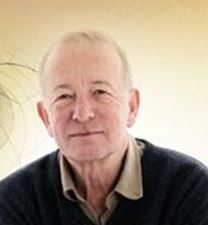 Nicholas Humphrey When Humphrey is not working within the field of science, he pursues his passion for politics and is a major supporter and advocate for the anti-nuclear movement. Born on March 27, 1943, Nicholas Humphrey was raised by a big family filled with notable scientists, physiologists, and immunologists (some who have even won Nobel Prizes). His upbringing heavily influenced his passion for science and since he was very young he never saw himself being anything other than a scientist. In 1956, Humphrey attended Westminister School where he was first introduced to the theory of light speed by an inspiring teacher causing him to become interested in physics. However, after graduating from Westminister and attending Trinity College, he felt a lack of interest in physics and mathematics classes that he took in university and instead found himself becoming more drawn to biology. Delving deeper into this emerging field, Humphrey found that biology was much easier for him to understand and dissect, so he challenged himself to conquer the most complex subject in biology, which is human consciousness. Humphrey first started his research on consciousness by studying animal behavior, and most specifically on gorillas and monkeys. At first, Humphrey based a majority of his findings and theories on the study of monkey brain cells in laboratories in Cambridge. Humphrey tackled multiple areas related to consciousness including studying the movement of the individual nerve cells within the brain and a monkey's reactions and behavior towards visual aesthetics. After this experience, Humphrey took special notice of one particular monkey, named Helen, who, after having her visual cortex removed, became blind. Humphrey developed an intimate relationship with Helen and often took her out for walks, exposed her to the environment, and had conversations with her to convince her that she can in fact “see”. Through this seven-year period, Humphrey not only developed a strong attachment to Helen but discovered many life-changing behaviors that contributed heavily to the development of his theory. Humphrey called this the “blindsight” which is the ability or “a previously unsuspected capacity for vision after total lesions of the striate cortex” which became a famous term used by future psychologists and biologists. When Helen was put down, Humphrey was devastated but moved on from his study of the visual cortex and began to approach the relation of consciousness to visual aesthetics. However, he realized that monkeys were not the best test subjects for this theory because they were only responsive to color but had no interest in shapes or sounds. After studying the biological components of monkeys, fellow scientist Dian Fossey invited Humphrey to observe how sociological factors affect awareness. Agreeing to camp in the Republic of Rwanda in Central Africa, Humphrey spent three months at Lake Turkana studying the social behavior and life of mountain gorillas. Because of this trip, Humphrey wrote his groundbreaking essay, “The Social Function of Intellect” which has been regarded as one of the fundamental works explaining evolutionary psychology. This essay was soon further developed into his very first book titled Consciousness Regained: Chapters in the Development of Mind, which was published in 1983. In Humphrey's Consciousness Regained, one particular excerpt summarizes his interpretation of consciousness, which is under the control of an internal nervous mechanism. “This mechanism is responsive to and engaged with the external environment but at the same time operates in many ways autonomously, collating information, hatching plans, and making decisions between one course of action and another. Being internal and autonomous it also, for the most part, operates away from other people's view. You cannot see directly into my mechanism, and I cannot see directly into yours. Yet, in so far as I am conscious, I can see as if with an inner eye into my own.” After this period of fundamental research, Humphrey continued his passion for the topic of consciousness by writing multiple books (a total of ten) that explain the evolution and development of the human mind. Not only did Humphrey spread his knowledge through writing, but he also had his own Channel 4 television series called The Inner Eye that soon became its own book. Humphrey does not limit his field to only scientific research but also expresses his opinion on politics, specifically on warfare. In 1970, Humphrey delivered a famous lecture, “Four Minutes to Midnight” and participated in the writing of In a Dark Time, with both expressing his anti-nuclear perspective. Through his activist speech and writing, Humphrey won the Martin Luther King Memorial Prize in 1984 to honor his argument about the danger and violence of atomic ammunition. To this day, Humphrey continues to branch out on topics related to human consciousness, and he is currently studying the placebo effect and proposing his new theory known as the “health management system” which is a process currently being further developed to analyze the phenomena that the body develops its own “medicine” against certain sicknesses and diseases. By relying more on the internal health management system, Humphrey believes that this will increase or improve our overall “biological fitness” and be more beneficial in the long run. He continues to study and conduct his research in laboratories and gives annual lectures at UCL. Further Reading1. Soul Dust: The Magic of Consciousness, Princeton University Press; 1St Edition edition (February 20, 2011) 2. Consciousness Regained: Chapters in the Development of Mind, Oxford Paperbacks; New edition edition (1 Sept. 1984) 3. The Inner Eye: Social Intelligence in Evolution, Oxford University Press (February 13, 2003) 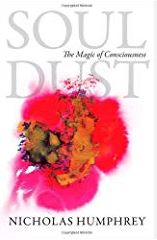 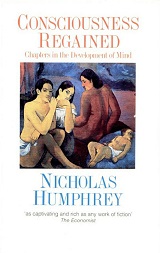 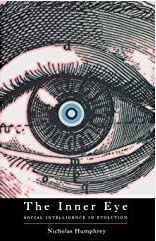 THE INVENTION OF CONSCIOUSNESSAn ExcerptNicholas HumphreyBut, evolution is inventive. Before long there arises in the brain a special moduler—a proto self, if you like—whose job is exactly that: to discover “what the stimulation means for me”. And, as luck would have it, it turns out it can do this by the simple trick of reading—extracting the meaning from—the motor command signals being sent out to produce the reflex response. So now, we have an agent who is reading the brain's own responses and making a sensory interpretation of them. In truth this is the first subject of sensation. But let's note there is nothing fancy or magical about the interpretation at this stage. The subjective experience does not have had any special phenomenal feel. What happened? I've argued that the key lay in how sentition went on evolving. Back at the start, the reflex responses are overt bodily actions occurring at the site of stimulation at the body surface. However things are never going to stay like this. As the descendants of the original creatures evolve to be more sophisticated, these overt responses soon enough become inappropriate, even inconvenient—you don't always want to grimace when you're touched by red light, say. So now the creature faces a problem. How to lose the bodily behaviour but keep the information about the meaning of the stimulus? The solution natural selection hits on is ingenious. It is for the responses to become internalised, or “privatised”, such that the motor signals no longer reach the actual body surface, but rather begin to target the body-map where the sense organs first project to the brain. Thus sentition evolves from being an actual form of bodily expression to being a virtual one—yet still a response that the subject can milk for information. Now, this privatisation has a remarkable—if fortuitous—result. It means that a feedback loop is created between motor and sensory regions of the brain—a loop that has the capacity to sustain recursive activity, going round and round, catching its own tail. And this, as I see it, is game-changing. Crucially, it means that the activity can be drawn out in time, so as to create the “thick moment” of sensory experience. But, more than this, the activity can be channelled and stabilised, so as to create a mathematically complex “attractor” state. And such an attractor can have remarkable hyper-dimensional properties (Krisztin 2008). Real, unreal, surreal? The answer will be in the eye of the beholder—the subject whose reading of this brain activity is giving rise to the sensory experience. At any rate, from now on, whenever the opportunity arises to “improve” the quality of sensations—to make further adaptive changes—natural selection has a whole new design space to explore. Small adjustments to the circuitry can have dramatic effects. And this provides the evolutionary context, I believe, for the invention of a special kind of attractor that will be read by the subject as a sensation with an unaccountable phenomenal feel. On the analogy of the Gregundrum, I've called this attractor the “ipsundrum”, to signify a real “impossible brain state” that is actually self made. The ipsundrum is still a species of sentition, that originates as a response to sensory stimulation, and still carries information about the objective properties of the stimulation. But this information now comes in a remarkable new guise. It comes, if you like, as part of “a riddle written on the brain” (Humphrey 2016a). I put forward this account of sensations more than 25 years ago. My arguments were largely theoretical, rather than empirical. But I'm happy to say it looks as if one of the key features has been getting experimental backing: The Invention of Consciousness namely that visual sensations depend on brain activity in a loop running between primary visual cortex and areas further forward. In a masterly review of recent neuroscientific evidence, Stan Dehaene (who, oddly enough, is something of a “qualia denier”) sums up the picture he sees emerging: “Consciousness lives in the loops: reverberating neuronal activity, circulating in the web of our cortical connections, causes our conscious experiences” (Dehaene 2014, p. 156). So there we have it: my glimmer of a theory of what gives consciousness its astonishing quality. With so much of the detail missing, I acknowledge it's not much more than a glimmer. But it must be better than no theory at all. Colin McGinn has written: “It is not that we know what would explain consciousness but are having trouble finding the evidence to select one explanation over the others; rather, we have no idea what an explanation of consciousness would even look like” (McGinn 1999, p. 61.) I humbly suggest that's no longer true. This is all I have to say for now about how a physical system could deliver conscious experience. However, for an evolutionist, of course it's too soon to wrap up the discussion. We may have found a possible answer to the question of what evolved, but we haven't yet begun to address the question of why it evolved. Even if we did know all the detail—if we could explain how conscious experience is created neuron by neuron, from red light touching your retina through to your making all the claims you do about the red qualia—we still would not know what this is good for. What can possibly have been the biological advantage, the contribution to fitness, of dressing up sensations in this provocatively mysterious way? It's a real problem. Let's return to the idea of consciousness as an invention. Under the first meaning of invention we saw that consciousness could indeed be considered to be “a cognitive faculty, evolved by natural selection, designed to help us make sense of ourselves and our surroundings.” But now, when we consider the role of qualia, this meaning of invention looks much less of a good fit. At first sight at least, qualia are neither cognitive, nor helpful! Jerry Fodor has stated the difficulty in his typically blunt way: “Consciousness”—and it's clear he's referring to qualia in particular—“seems to be among the chronically unemployed. As far as anybody knows, anything that our conscious minds can do they could do just as well if they weren't conscious. Why then did God bother to make consciousness?” (Fodor 2004). John Searle has made much the same claim, about qualia having no impact at the level of behaviour: “As far as the ontology of consciousness is concerned, behaviour is simply irrelevant. We could have identical behaviour in two different systems, one of which is conscious and the other totally unconscious” (Searle 1992). If these philosophers are right, it would mean that consciousness—at least its phenomenal side—could not have had any impact on our ancestors' survival. In which case the genes specifying the underlying brain circuits could not have been selected by natural selection. Then, are these philosophers right? I think the plain answer is, No. They are guilty of a massive failure of imagination. Fodor says qualia are “unemployed”. He seems to take it for granted that, if consciousness does have a job to do, this can only be to provide us with some special kind of skill—helping us to act more intelligently or more efficiently in the service of some practical goal. But what if this notion of employment is simply not appropriate when discussing the phenomenal aspect of consciousness? What if phenomenal consciousness, rather than making us more intelligent or more productive on the outside, makes us somehow bigger on the inside—emotionally and spiritually bigger? What if consciousness is actually an invention in the second sense I mentioned at the start: “a fantasy, conjured up by the brain, designed to change how we value what becomes of us?” Think about it. Think again about the real impossible triangle, the Gregundrum. Why, for what purpose, did Richard Gregory invent this brilliant illusion? It surely wasn't to serve any practical purpose. There's a photo showing him with his face framed by the real impossible object (Gregory 2011). Look at his broad smile. He did it simply to amaze us. Then, could it be that Nature, when she invented qualia, did it so that we conscious creatures should amaze ourselves? Don't get me wrong. I am a card-carrying Darwinian reductionist. I've no wish to get off the explanatory hook by substituting fuzzy answers for clear ones. But still, I do think there are times when, in the interests of science, we need to loosen up a bit. Before we pronounce on the employability of phenomenal consciousness, we need to undertake a proper natural history. We should be studying how conscious experience actually changes the way people live in the world. How does exposure to qualia change people's psychology? What beliefs and attitudes are generated? How does it affect people's ideas about who and what they are, and what kind of world they live in? These are—or ought to be—empirical questions to be asked of ordinary people. And we should be ready to consider all sorts of possible answers, not just those we'd find discussed in the science or philosophy section of the library but perhaps those that belong in the self-help section, or even the New Age. But, most important, we should begin the inquiry close to home, by taking seriously our own intuitions about just how and why phenomenal consciousness matters to ourselves. Think about it. Suppose the magic for you were not there. Suppose your sensations were in fact just brown bag numbers. What would be missing from your life? It's clear to me that in such a semi-zombie state I—you—would lose out, on several levels. First, you'd lose your psychological essence, your core self. Next, you'd lose your sense of intimacy with things in the outside world. And then, finally, you'd lose your soul, and other humans would lose their souls as well. We saw, early on, how the binding of sub-selves leads to the creation of the core self as the singular subject of a range of mental states. But, now let me say it, even when all the sub-selves are gathered together, the larger self is by no means secure. A self-stripped of sensations would remain a pretty anaemic kind of self. But add in the qualia, and everything changes. By lifting sensory experience onto that mysterious, non-physical plane, qualia deepen and enrich your sense of your own presence. You find yourself living in thick time. You become the owner of a self that you want to expand and preserve for its own sake—in short, a self worth having. Take away this primary sense of your own presence, and your existence would simply be less wellfounded, less convincing—to you and everyone else. Next, though this isn't so obvious, you'd lose the external world—at least the world as you've come to know and love it. Even though it's your own brain that creates the qualia, you can't but project the special qualities of sensations out onto the objects of perception in the outside world. In doing so, you spread a kind of fairy-dust around you. You enchant the world. Take away this magic paintbrush, and the world would lose much of its significance. You'd find it a less awesome place, less fun, less promising. You did it. It's all yours. The things out there, experienced through bodily sensation, are singing your song. It's bound to dawn on you that when you pay homage to the beauties of nature you are really paying homage to yourself. So, by a strange inversion, the magical world you've made returns the compliment and further enhances your sense of your own significance. Then add in the poetry of human culture, and by one path or another, your core self becomes elaborated into that marvellous cultural construct: the human soul. A soul that, with your generous theory of mind, you recognise in other people too. Now, I will draw this to a close. Earlier, when I quoted Shakespeare's prologue, I omitted the first lines. They read. O for a Muse of fire, that would ascend. The brightest heaven of invention. The chorus means “invention” in the second sense: he's seeking permission for the actors to create an extraordinary work of fiction on the stage. I like to think that Nature did it first. Qualia are just such an invention, arguably the brightest heaven—the most remarkable story that anyone has ever dared to tell. Thanks to natural selection, we all contain within ourselves that muse of fire. Source: www.humphrey.org.uk MSAC PHILOSOPHY GROUP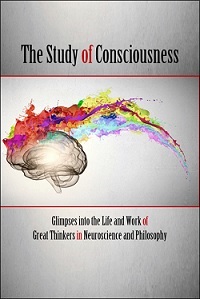
Human interest in the nature of consciousness dates far back to our ancestral past. However, it is only in the last century or so that researchers and philosophers have been able to tackle the problem in a more scientific way. This is primarily due to our increasing understanding of human physiology and how our brain functions. With the advent of ever more sophisticated technology—from fMRI scans, functional magnetic resonance imaging, to DARPA's neural engineering program, understanding neural “dust”—we are now able to not only create vivid simulations of cerebral activity but also to systematically reverse engineer the brain. Whether such empirical observations will unlock the secrets of self-reflective awareness is still open to vigorous debate. Nevertheless, the study of consciousness is now considered to be of elemental importance and has invited a large number of brilliant thinkers—from a wide range of disciplines, including mathematicians, quantum physicists, neuroscientists, and philosophers—to join in the discussions and offer their own contributions. The following essays briefly explore the life and work of pioneers in the field of consciousness studies. Included in this eclectic mix are such notables as Giulio Tononi (University of Wisconsin), Paul and Patricia Churchland (University of California, San Diego), Noam Chomsky (M.I.T.), the late Timothy Leary and Terence McKenna, and Jean Pierre Changeux (Collége de France) among others.
Comment Form is loading comments...
|